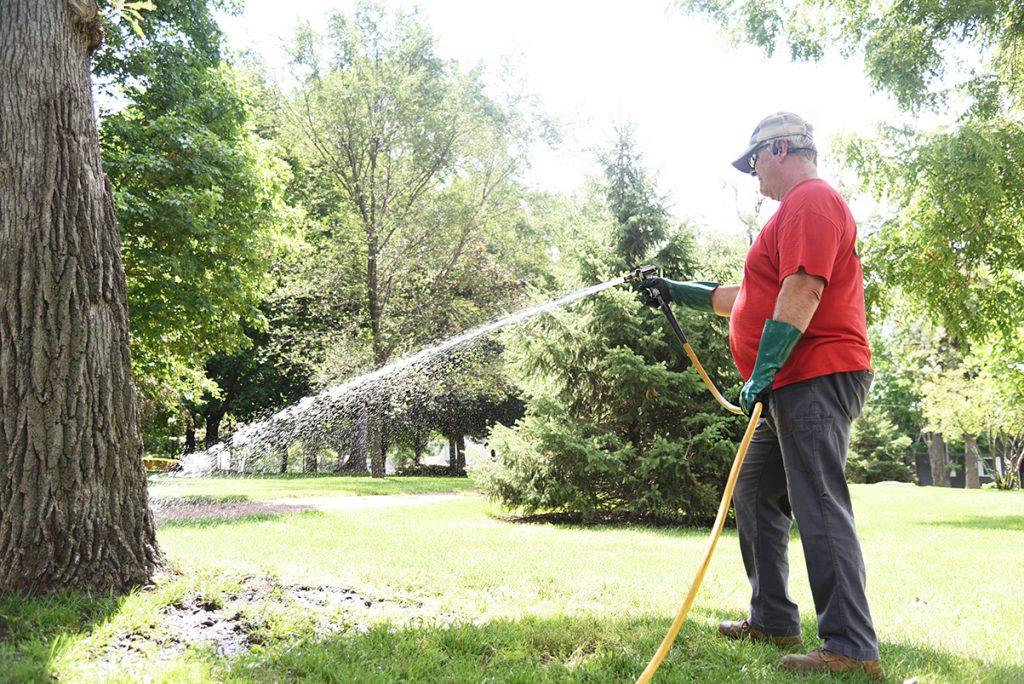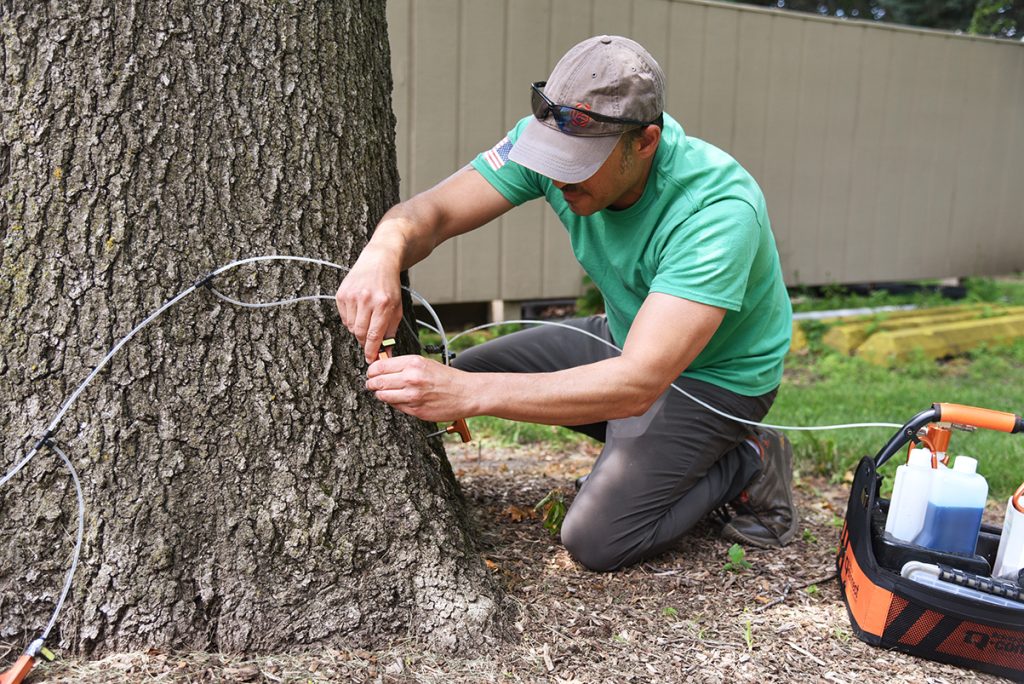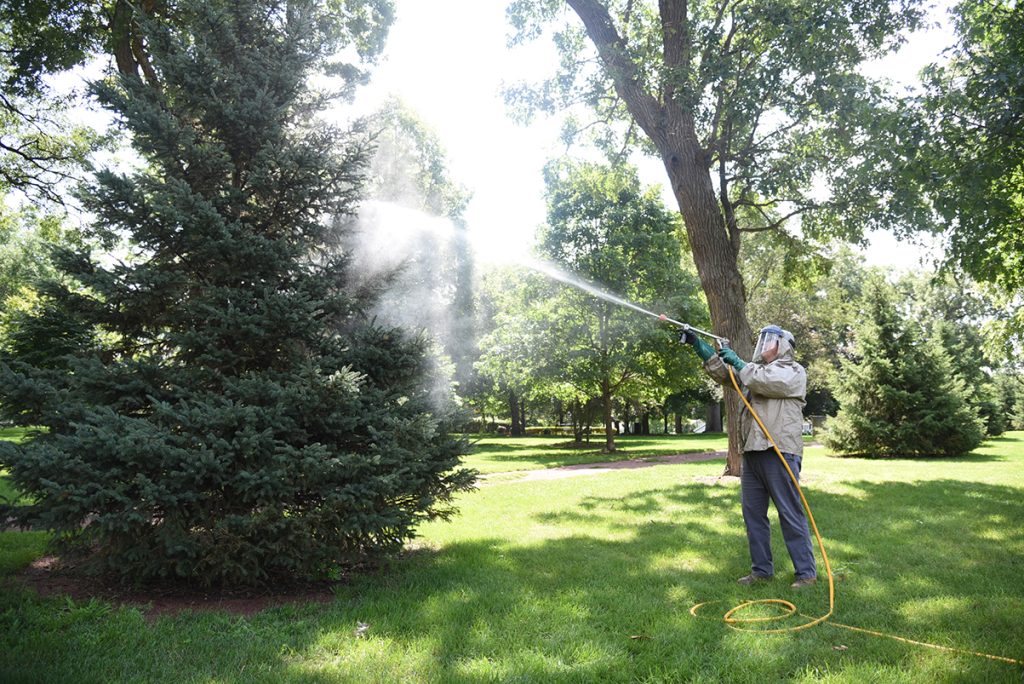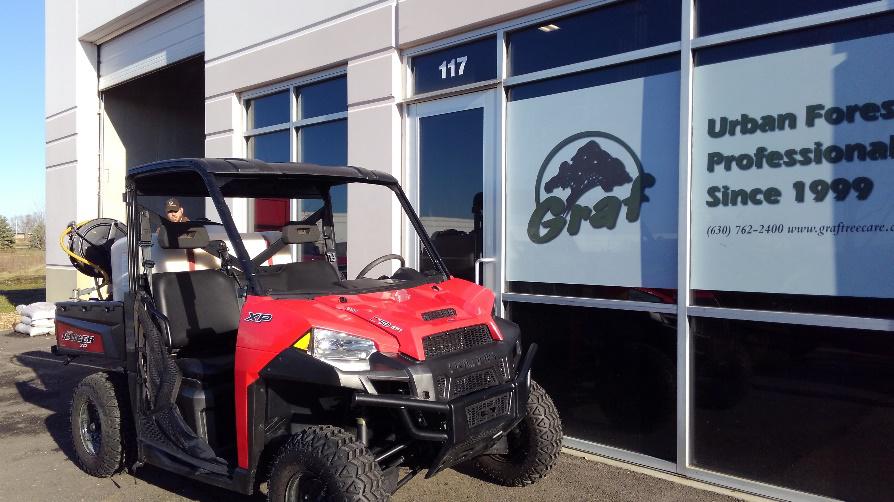Plant Health Care
Graf Tree Care specializes in Plant Health Care, and out of all of our applications, root feeding is our specialty in the world of tree heatlh. We have found our niche in specialty root feeding by using the right fertilizers at the right time on the right trees. What may be the right fertilizer, timing and application method for one tree may not be beneficial for another. Over time, we have steered ourselves away from broadcast fertilizers for all trees that can be inefficient for us and our customers both. Let’s start by explaining why root feeding is important in the urban landscape.
Root Feeding

The soils found in our urban landscape are not what trees are designed to exist in, much less grow and thrive. We have essentially removed the “forest floor” from our trees eco-system. Out in the woods, where trees are native, they receive the necessary nutrition from the decomposition of organic materials such as fallen leaves and dead branches.This is called “nutrient recycling. Trees, like people, will use the nutrients that are readily available, but if nothing is going back into the soil, then that soil will become stagnant.
By conforming with our cultural norms for landscaping, like raking leaves, picking up fallen branches and having lawn and competing plants under our trees, we have broken the chain of nutrient recycling. They are often planted in places unlike their natural habitat with sidewalks, patios, driveways and houses covering up their root systems. With the proper use of the correct fertilizers timing and equipment, we can re-create what is happening on the forest floor to achieve the highest level of health and best possible appearance of our urban trees.
While traditional chemical fertilizers have their place, and we still offer this service, we have shifted our focus to using bio-fertilizers to improve the root systems and the soil that the trees are growing in. Building healthy roots allow trees to withstand summer heat, drought and watering restrictions. Healthy roots also make trees better able to withstand attacks from insects and disease and require less chemical treatment. The bio-fertilizers we use contain mycorrhizal fungi, beneficial bacteria and microbial nutrients.
If you have questions about bio-fertilizers or would like an evaluation and estimate, please contact us.
Disease and Pest Control

Graf Tree Care specializes in the diagnostics and treatment of tree and shrub diseases and insect problems. Fixing tree problems is difficult, so we believe in a preventative approach to insect and disease control. In many cases, our first encounter with a tree is when it is in a diseased state or when it is already in poor health. Our approach is to evaluate our client’s trees and anticipate what problems we commonly see that the tree may eventually have. Preventative treatments are always much easier, effective, and can oftentimes cost less.
There are other fungal diseases that are not so easy to control. These are internal fungus, or fungus that reside and clog up the tree’s vascular tissue. When fungal spores invade the xylem, the tree’s water uptake is partially restricted or completely cut off. The tree then thirsts to death. Common internal fungal diseases include Dutch Elm Disease, Oak Wilt, Verticillium Wilt and Canker Cytosper. These disease are fatal and not possible to treat in a curative fashion. Treatments for these diseases need to take place first as preventative treatments.
There are many fungal pathogens that harm our trees and the soils in which they live in. These pathogens negatively affect a trees ability to thrive and survive in our urban landscape. For instance, foliar fungus like Apple Scab, Hawthorne Rust, and Diploia Tip Blight damage the tree’s leaf or needle. A fully developed leaf or needle is necessary for maximum efficiency in the photosynthetic process. Not only do these foliar fungal diseases take their toll on tree’s health but they also create poor aesthetics, making the trees appear brown or sometimes defoliated completely. These diseases are easily controlled with a series of three fungicide sprays done in a timely way in the spring. Our clients have been known to see a noticeable difference in one season in tree health and appearance.
Insect problems are also controlled with timely sprays upon emergence for curative treatments or ground applications of insecticides early for a more preventative approach. Insects we commonly treat for are: Zimmerman Pine Moth, Japanese Beetle, Honey Locust Plant Bug, Leaf Miner, and of course, the Emerald Ash Borer.
We also back up all insect and fungal applications with root feeding to keep the trees in best possible health to help the trees defend against these problems naturally.

